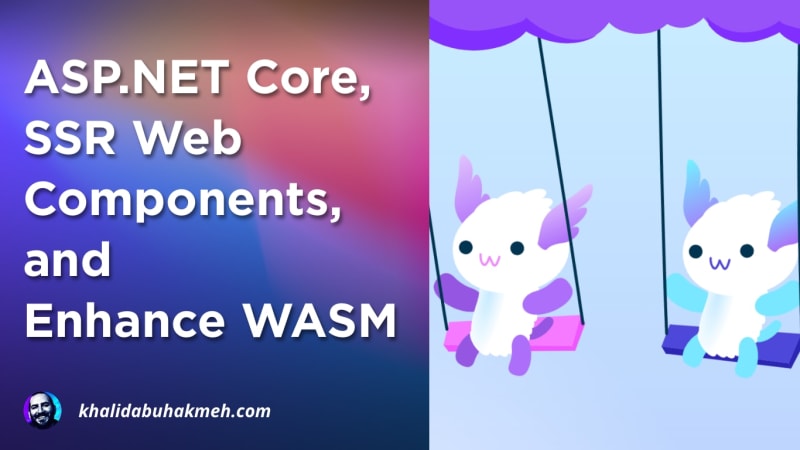Web components are some of the most exciting technology I’ve seen in a long time. They promise to revolutionize how we write, maintain, and ship HTML-based applications. With web components, you can extend the set of HTML tags specific to your site while still providing the functionality you intended with less markup.
And then there’s Web Assembly, or Wasm for short, a technology that opens up a world of possibilities. It enables all ecosystems to package functionality in a reusable format that can be deployed across a wide range of platforms.
Could we combine them to provide ASP.NET Core with brand-new server-side rendering functionality while avoiding the client-side costs of web components as they attach to the DOM? Sure we can! With Enhance Wasm.
What is Enhance WASM?
Enhance WASM is an open-source initiative to bring the features of Enhance, a dynamic web apps framework, to the server for all technology stacks through Wasm. As mentioned in the opening, web components are significant but take some time to attach to an active web page. This can be less than ideal. If we can render some of the web component’s HTML in advance, we can provide users with a better and faster experience while the page catches up.
Web components are a standard way of building components for HTML apps without libraries like React, Angular, Vue, or Svelte. They are also very lightweight, typically not needing much, if any, build steps. The Enhance project has guiding tenants that make it appealing for folks suffering from SPA fatigue:
- Author and deliver HTML Pages
- Use Web Standards
- Progressively enhance working HTML
ASP.NET Core and Razor are perfect fits for this philosophy as they are mature and reliable technologies. Let’s see how to get these technologies working together.
Getting Started
You’ll first need to download the latest version
of Enhance WASM from its GitHub page. Then, place
the enhance-ssr.wasm file as Content in an ASP.NET Core application and set it to always copy to your build output
directory.
Next, install the following packages.
The SDK package is a wrapper for the runtime packages. Both are required to make the following code work.
Now we’re ready to write a wrapper for Enhance Wasm.
Running Enhance WASM in .NET
This part is pretty straightforward. We need to load the enhance-ssr.wasm file into memory, then load it as an Extism
plugin.
Now, we can call this code with web component definitions and elements to process.
Wooooooooah! It works! Well, it’s nice but it could be nicer. Let’s make a tag helper for ASP.NET Core.
ASP.NET Core Enhance Wasm Tag Helper
ASP.NET Core has tag helpers that should make this even more awesome, so let’s do that!
We’ll create two classes: EnhanceTagHelper and EnhanceRequestContext.
You notice the type EnhanceRequestContext; this request-scoped instance allows us to push processed CSS into memory
while all the components are being processed.
Let’s register these types in Program.cs in our services collection.
We must also inform Razor about our new tag helper in _ViewImports.cshtml.
We also update our _Layout.cshtml file to use the EnhanceRequestContext to render the CSS. Since
the _Layout.cshtml is processed last, we know all web components will have already been processed in our views.
Note: if you want to process web components in the _Layout.cshtml file, they will work, but you need to get any
scoped CSS into the collection. This can be done using middleware or some other pre-layout processing. This is an edge
case, and I thought it was overkill for a proof of concept.
Finally, we can use the tag helper and our server-side rendered web components in any Razor view.
With the resulting HTML being what we expected.
along with the aggregated style element.
Awesome!
Conclusion
If you’re interested in trying this, I’ve made the *
*code available on GitHub**. I haven’t thought out some edge
cases, like the _Layout.cshtml processing, and what to do with attributes in Razor vs. the ones on web components.
That said, there’s a lot of potential here for providing an experience never before seen for ASP.NET Core developers.
Thanks for reading and sharing this post with friends and colleagues. Cheers.

 Photo by
Photo by 


